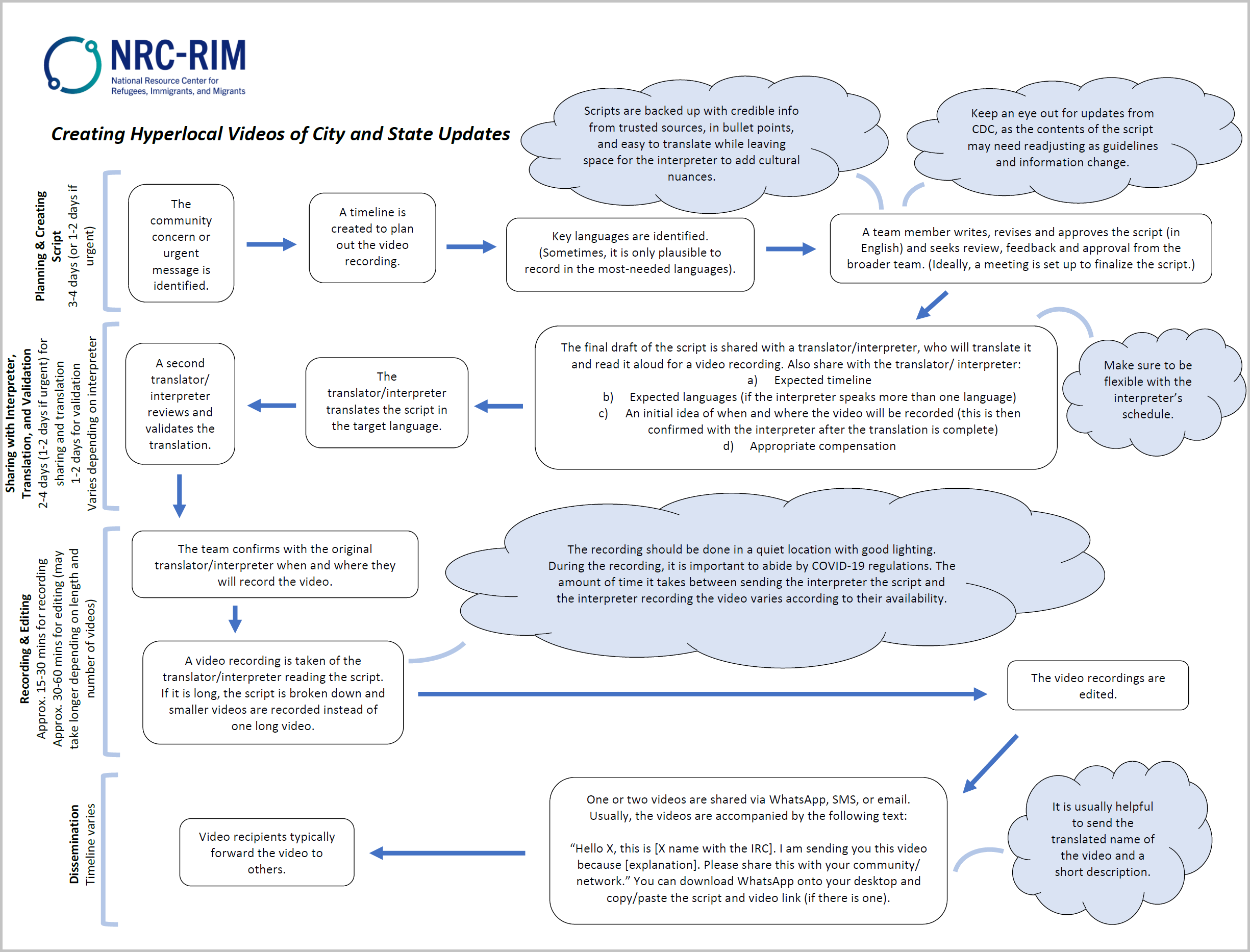As COVID-19 continues to disproportionately impact refugee, immigrant, and migrant (RIM) communities, it is vital that linguistically and culturally appropriate messaging created by and from the community is accessible. Recognizing the need to reach individuals with real-time, tailored messaging about COVID-19, the International Rescue Committee (IRC) in Boise is creating hyperlocal, rapidly produced videos. These informal videos respond to RIM communities’ expressed concerns while disseminating major local and regional updates from city and state officials. They are developed in partnership with RIM communities and shared through preferred communication platforms such as WhatsApp, SMS or email.
Keeping it Local: IRC-Boise
Early in the pandemic, RIM community members shared that they trusted leaders in their community to provide guidance related to COVID-19, including information on local mandates, factual information, and what is misinformation. In response, IRC-Boise developed a series of 46 short, hyperlocal videos in 11 languages. These videos are co-created with local community leaders who are often featured as the video messenger. Listening before creating is central to the hyperlocal videos’ success. By involving communities throughout the entire video creation process from message creation, review and dissemination, the videos are truly reflective of the communities’ concerns.
Community leaders often have a similar background and lived experience as those they are trying to reach, are recognizable to the community, and provide information in a way that is linguistically and culturally appropriate. IRC-Boise has found that individuals are more likely to trust messages from someone locally based on whom they know and trust. People are also more receptive to messaging which addresses local COVID-19 concerns, regulations, and updates. Timely messages of concern such as local business regulation developments under COVID-19 are shared within as few as 5 days, whereas urgent regionally announced protocols and key updates are shared within 1-2 days. For example, when there were changes in vaccination access from Governor Brad Little, a brief script was quickly developed (approximately 120 words), reviewed, translated and recorded and disseminated within 2 days.
From the Community to the Community: Hyperlocal Messaging Flow Chart
The produced videos aim to elevate trusted, reputable sources that share accurate facts within the context of the community’s understanding. This means that these hyperlocal, rapidly-produced videos vary across contexts. Each new emerging mandate or change in the COVID-19 context may produce new concerns, misinformation, or barriers that must be addressed in an individualized and culturally sensitive way. This requires considerable community expertise but also care in choice of wording so that the video does not unwittingly elevate misinformation, discredit fears, or minimize barriers. For a breakdown of the process for video content creation and dissemination, please reference the flow chart.
The flow chart breaks down the hyperlocal process into four distinct areas: 1) script creation (planning and creating based on reputable sources such as the CDC and NRC-RIM), 2) sharing with the translator/interpreter (translation and validation), 3) recording and editing, and 4) dissemination. While following the Community Messaging Flow Chart, it is recommended to utilize an informal, low budget production such as utilizing a cell phone to allow a personal interaction while recognizing the community within the messaging. Videos are a great method of disseminating information, as individuals can watch videos on their own time and share them with others. For more information on how to make your own videos with a phone or tablet, and how to get free editing support, please visit the NRC-RIM Video Booth.

Word travels when messaging is easily shareable, digestible and ultimately created by and for the community. Sharing messaging that is short, reflective of true needs and informed by cultural nuances, is essential to ensure the flow of community-to-community messaging. For this to be successful, ideas and input come from within the community throughout the entirety of the messaging process, not just at one point in time. Community-led messaging leads to locally designed, and consulted, representation with dignity and agency, talking to and with the community.